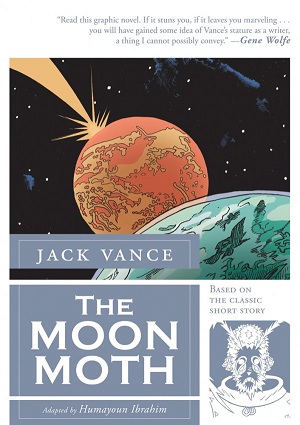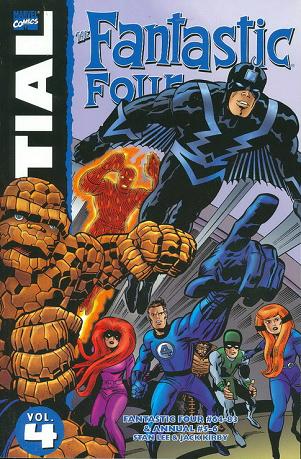- Where Should We Bury the Dead Racist Literary Giants? – The Awl – At the same time, focusing on race in Lovecraft can also lead to a greater appreciation of his work, and a better understanding of its horror. Joshi may think he's protecting Lovecraft's legacy by minimizing the role of race in his stories, but the truth is that, to the extent that Lovecraft is still meaningful, it's in large part because of his portrait of his own racism. Lovecraft isn't a great artist despite being a racist, as Joshi would have it. Nor is he a lousy artist because he's a racist, as Older says. He's a great artist and he's a racist: Lovecraft's world is one in which racism poisons everything, in which the fear of anyone who isn't white is so overwhelming that it fills the seas and the skies and everything in between with gibbering demons and cosmic despair. The bleak, clotted hatred with which he renders that world is precisely what makes his work valuable.
- What to read on the Tory proposals for a “Bill of Rights” | Jack of Kent –
- GUEST POST: Of Meat Hooks and Desire by Max Gladstone | Brian Staveley – There’s more to life than stabbing people in the gut. Or melting their faces off with a fireball. Or being dropped out of a helicopter, or tortured with a potato peeler.
- Fantasy-Faction World Tour of Wonderment: The Netherlands | Fantasy-Faction –
- Marvel & Jack Kirby Family Settle Long-Running Legal Dispute – Page 5 – So what happened wasn't that the Kirby family sued Marvel just because they one day decided to up and want more money. They didn't even sue. What they did was file for termination of copyright assignment — the very thing that the law allows creators to do. They didn't do this against the wishes of Kirby himself — Kirby had been all for doing it, ever since the law had been changed. But they had to wait a certain amount of time, and Kirby didn't live long enough to see it happen. But he was always on board with it.
Articles with the Tag Jack Kirby
Jack and Jack, Kirby and Vance

Tom Spurgeon recommends the comics adaptation of Jack Vance’s short story The Moon Moth
This has to be the oddest stand-alone science fiction comic I’ve read in years. While I can’t tell yet how good it is, it was certainly memorable and I encourage those of you that like such things — and as much as the new science fiction-oriented Image stuff is on everyone’s minds I’m thinking that’s a lot of you — pick this one up and take a look. Jack Vance has an almost Kirby-sized issue with neglect in terms of his influence and the ubiquity of his approach.
Interesting to compare Vance to Kirby, where I can sort of see what Tom means as both were incredibly influential on their own terms and somewhat neglected now, though I do think Vance does not quite have the stature in science fiction that Kirby has in comics, if only because the field is more contested. The true difference between the two is of course that Vance got to keep the copyright and trademarks for all his stories and Kirby could not, which means that we did get a fan driven Vance Integral Edition, but not a Kirby equivalent.
Lee and Kirby didn’t know it was the sixties
Tom Spurgeon worries at one of his artistic preferences:
for all that the Fantastic Four comics worked in the 1960s, I’m somehow not a big fan of placing the characters in the 1960s. That’s a nice picture and everything, I just don’t get a thrill out of seeing those characters “in their time” the way someone could surmise I might from my affection for the original Lee-Kirby run. What can I say? I’m complicated.
Actually, this makes perfect sense. There’s a huge difference between Lee and Kirby working on Fantastic Fourback in the sixties and somebody coming along forty-fifty years later and doing a pastiche or homage, drawing explicitily on our shared cultural conception of “the sixties”, like Alex Ross did with Marvels. In the latter case the pastichist is working in an aesthetic formula that has been retroactively defined as “sixties” and tries to adhere to this as best they can, working with a limited amount of both visual and storytelling cliches, at all times conscious of the desired impact on their readers. You can see that in the end product too: you get either the Leave it to Beaver/JFK Camelot, the Hippies and Summer of Love or the Vietnam/race riots/RFK version of the sixties.
Lee and Kirby had their own constraints of course, both unconscious and conscious ones (the comics code not being the least of them) but they lacked that creative straightjacket their modern day emulators willingly subject themselves to. They could evolve, while of necessity somebody like Alex Ross or Darwyn Cooke trying to place the Fantastic Four or the Silver Age DC characters in their own time has to remain static, consistent, recognisable.
For the reader, it’s the thrill of the familiar rather than the thrill of the new. Hence always disappointing and empty.
Shaft or Sidney Poitier
“In comics there are two kinds of Black people: Shaft or Sidney Poitier” — Dwayne McDuffie.
A trailer for Jonathan Gayles’ documentary movie on Black masculinity in comics, which came out last year. Its site has a great selection of takes from the movie, to give you an idea of what it’s about. Lots of talking heads of course, but the subject itself is interesting enough for this to not matter. Since it seems to currently do the rounds of various film festivals, it’s not available to buy yet, but I’ll certaintly keep an eye out for it once it does come out on dvd. Especially when the teasers promise things like the influence of the P-Funk mythology might have had on superhero comics and vice versa.
(There was at least one comics writer funky enough to know about George Clinton, Bootsy and Bernie Worrell, Peter B. Gillis, who would Tuckerise them as the founders of A.I.M. in, IIRC, an issue of Supervillain Team-up.)
When I first got into that P-funk cosmic mythology a few years backs, the images that the music put to mind where all pure Kirby. If P-Funk had ever been put into comics, Kirby at his most seventies extravagant would’ve been ideal for it.
Fifty Essentials in Fifty Days 34: Essential Fantastic Four Vol. 04

Essential Fantastic Four Vol. 04
Stan Lee, Jack Kirby and friends
Reprints: Fantastic Four #64-83 and Annual 5-6 (July 1967 – February 1969)
Get this for: Lee and Kirby at the peak of their game still — Five stars
I’m sorry, but I have to repeat the praise from last time: gods, Stan Lee and Jack Kirby were good together on The Fantastic Four. With the start of this volume they’ve already had more than sixty issues behind their belts and you’d expect that, especially after the creative burst of the last ten-fifteen issues that the pace would slacken a bit, but nothing is further from the truth. They keep on expanding the Marvel Universe, first with the coming of the Kree, including the Kree Sentry and Ronan the Accuser, then with the origin of what would later become Adam Warlock, finally with the discovery of Subatomica. Not to mention the birth of Sue and Reed’s son…
But there are also adventures with old friends, like the Inhumans and the Black Panther and old villains like the Mad Thinker and the Wizard return too. Apart from the Kree Sentry and Ronan, the only real new villain is Psychoman, introduced in Annual #5. There’s plenty of action and conflict here, but the focus does not lie on fighting supervillains, something which the Fantastic Four at any rate has never been about. The FF is at its best confronting some cosmic menace or going on a voyage of discovery, not handling the same villains that could also be menacing Iron Man next week.
There’s not much to say about the stories here, to be honest, that I haven’t said before. Lee and Kirby know these characters inside out, they know how they will respond in any situation they put them in. There’s always a bit of argument of who did what on these series and it’s no great secret that it was largely Kirby’s imagination that made The Fantastic Four so special. He gets to go wild again with Subatomica and the story introducing Him, who would later become Adam Warlock. His design work and sense of grandeur remain unsurpassed.
As does the rest of his art. It’s the cosmic decors and bizarre creatures and villains everybody remembers from Kirby, but his quiet moments are great too. He can get so much emotion from a few subtle lines in a character’s face, especially with the Thing, who wears his heart on his sleeve. You will never mistake one Kirby character for another. His story layout is excellent too, great sense of pacing and with everything he does in service to the story.
One thing that did annoy me about this volume was the neglect of the Invisible Girl, who had married Mr Fantastic the previous volume and who was now kept out of the action by her over anxious husband. It reflects the mores of the time that Sue, as a married woman, would need to be protected and kept away from danger but it comes over as incredibly sexist in retrospect. Things get worse when she’s pregnant. Obviously then she cannot join them on missions anymore, but the other three members keep her completely out of the loop for a time. There’s also Crystal, Johnny’s Inhuman girlfriend whose powers are arguably greater than any of the Fantastic Four, yet is completely wasted in most of the stories here…
That quibble aside, this is another perfect volume.